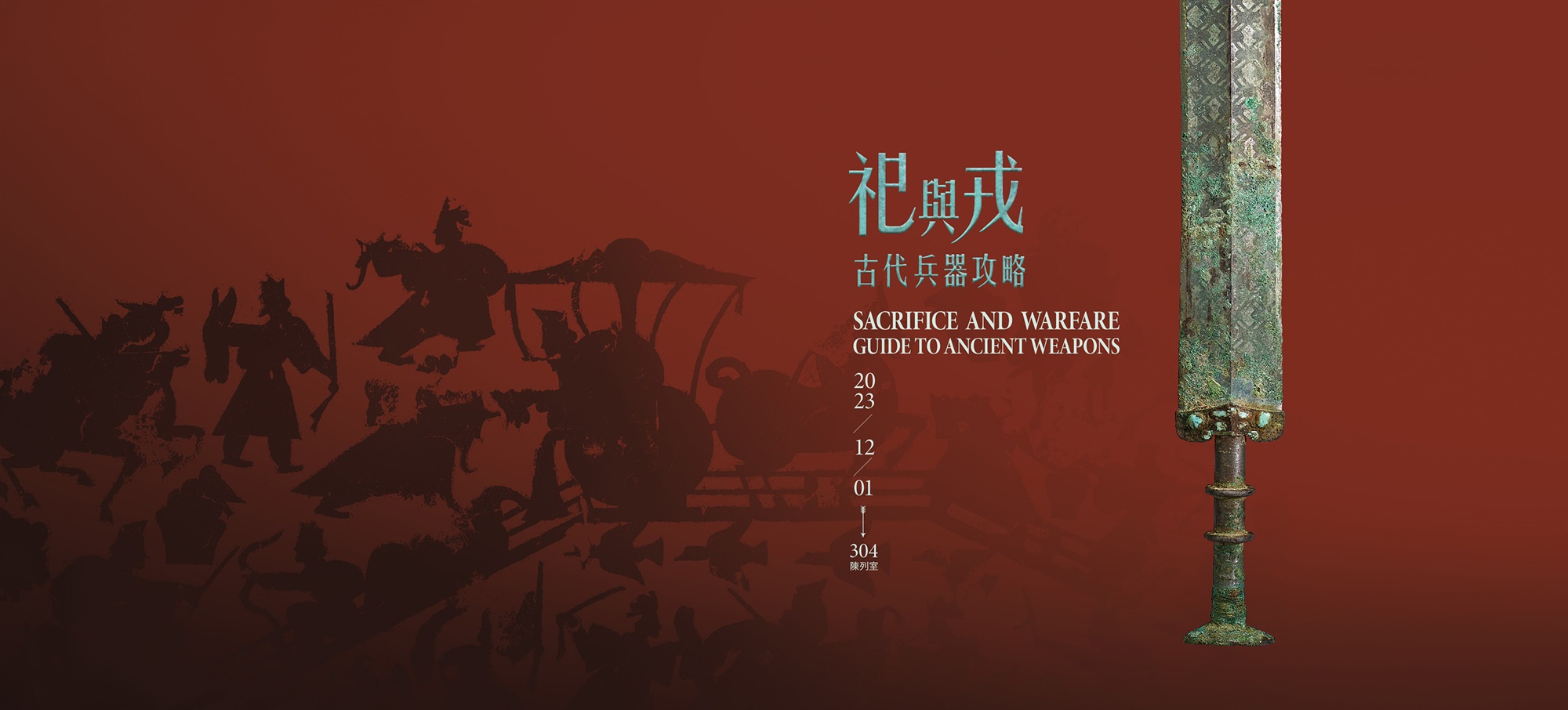Revealing the Sharpness
After entering the Bronze Age, the malleability of bronze superior to stone plus the production capabilities afforded by casting, enabled humans to achieve levels of production that were difficult to attain with polished lithic items. Thinner, finer, and longer bronze weapons gradually replaced the earlier stone ones. The period from Shang to the Western Zhou in Chinese history is when the foundation for the development of bronze weapons was laid. This is also the time when dagger-axes(ge), spears (mao), and halberds(ji) became the basic equipment for soldiers. Simultaneously, military success or failure was crucial to the foundations of governance, and the quality and quantity of weapons naturally came to represent political power. Bronze weapons merged into the tradition of jade weapons, becoming ceremonial objects signifying social status.
-
Bronze shaft-hole (yue) axe with deity and tiger head designs Early Western Zhou dynasty, ca. 1046-
Length21.3cm Width16.5cm
Thickness0.5cm Hole diameter4.1cmSemi-circular axes emerged in the Western Zhou dynasty. They inherited the traditions of perforated axes in the Neolithic period as well as those of shaft-hole axes from the steppe . Concerning this particular artifact, the shaft-hole is decorated with deity and tiger head designs. The bronze axe is thick and well-made, but its blade is blunt and cannot be used in actual combats which, coupled with their religious implications, suggest that it may have been utilized as ceremonial weaponry.
-
Jade archer’s ring (she) Late Shang dynasty to Western Zhou dynasty, ca. 1300-771 BCE
Length4.0cm Width3.4m
Thickness2.8cmArcher’s ring is used to protect the finger when pulling the string to shoot an arrow. This type of ring was worn on the thumb. The slightly concave part on the outer side of the ring was used for pulling the string, whereas the two holes on the outer side of the ring were used to secure the string to the wrist. During the Shang and Zhou dynasties, Chinese archers used their thumbs to hook strings, whereas Western archers used their index fingers, middle fingers, and ring fingers to pull strings.


